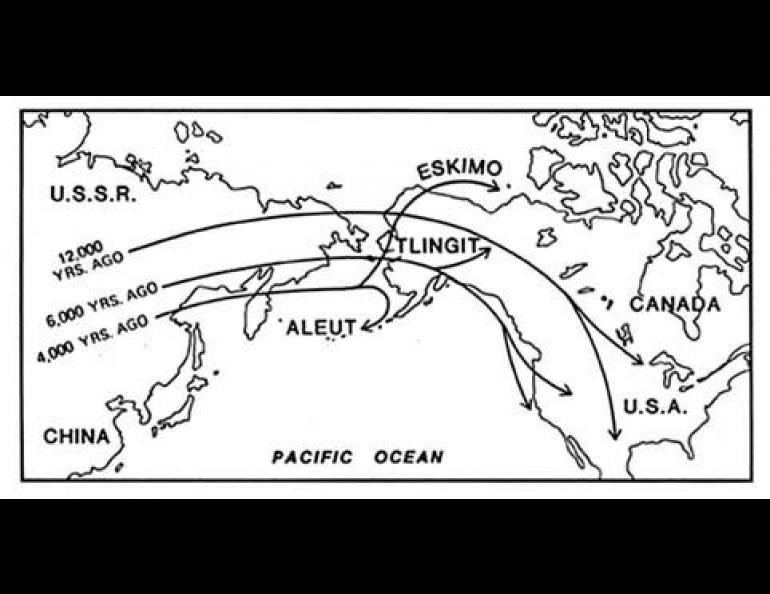
The First North Americans
There is little doubt that the Americas were originally populated by nomads from Asia who migrated across a land bridge connecting Alaska with Siberia. These migrations occurred during epochs of low sea level when much of the earth's moisture was locked up in snow and ice.
Three anthropologists, working independently, using different approaches, and each unaware of the others' work, have now concluded that there must have been three unrelated migrations, involving different Asian strains, and occurring thousands of years apart.
One line of evidence is provided by Joseph Greensburg of Stanford University, who found that all American Indian languages can be placed into one of three groups. Greensburg studied more than 1,500 Indian tongues, searching for similarities in simple words such as I, you, the numbers one and two, and names for parts of the body. Such words tend to change little with time. In most European languages, for example, the word for "me" begins with the letter "m".
Steve Zegura at the University of Arizona had been basing his studies on blood types of American Indians, and found that this data corresponded with the same three regional groupings noted by Greensburg.
Finally, Arizona State University anthropologist Christy Turner, who had been studying Indian teeth for the past twenty years, found that his conclusions, also, meshed with those of Greensburg and Zegura.
What emerges from the joint findings is that there must have been three separate migrations into the Americas from northeast Asia.
The first of these occurred at least 12,000 years ago, and the immigrants are the ancestors of most Indians in North and South America, including the Aztecs of Mexico and the tribes of central and eastern U.S. The point of origin of these people, say the anthropologists, was probably the Lena River basin of the U.S.S.R.
A second group of immigrants appear to have entered North America about 6,000 years ago, and were the ancestors of the Navaho and Apache Indians, and the Tlingit and Haida tribes in southeast Alaska and the American northwest. These people probably came from the northeast forests of Siberia.
Finally, a third migration is thought to have come over only 4,000 years ago, where they split into the modern Eskimos and Aleut Indians. This group appears to have originated in the Amur River basin of southeast Russia.
It is interesting that each successive wave seems to have originated further to the south. It is conceivable that this may be due to the closing of the land bridge by rising sea levels and the enforced dependence on water travel.





